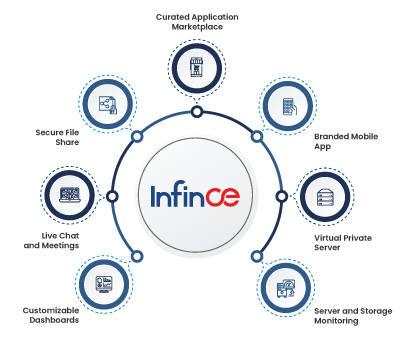5 tips to run your workforce remotely during COVID-19
The global economy is undergoing a tremendous shift as the COVID-19 pandemic rips through boundaries of trade, social interactions, and travel. With more businesses forced to let go of their stringent office-based work culture and transition into a remote working model, there are a rising number of challenges that employers must learn to cope with. With the pandemic showing vague signs of receding any time soon, it is important for businesses to learn to efficiently manage remote teams and ensure disruption-free customer service from their business. So how can they achieve this excellence of managing remote employees?
Here are 5 tips to effectively manage remote teams during challenging times:
1. Set Protocols and Agreements
Before you start to assign work orders or schedule delivery timelines for remote teams, it is important to arrive at a consensus on the operational model for remote employee management. Though lockdown and other government regulations indicate fewer chances of people moving out of their homes (except emergencies), it is important to set the terms on operating hours clearly so that the work-life balance of employees isn’t affected.
Read more: 8 easy tips to effectively work from home
Organizations need to follow up with employees not only on work-related proceedings but also on the personal health and safety of the employees and their family members. As such, companies need to publish and make managers aware of availability guidelines for work. Employees need to be offered flexible working hours when they are continuously working remotely as they may need to attend to personal priorities as well.
2. Strategically Plan Meetings and Reviews
It is important for managers and their reports to be in sync with assigned workloads and ensure timely submission of customer deliverables. While provisions for any time communication will always be there, it is better to create a schedule to review work progress.
There could be weekly or bi-weekly team review calls that can happen over video conferencing for the entire team to come together and interact as if they were in an office meeting. Task dependencies, support, and other mutually concerning matters can be taken up for discussions and managerial interventions could be made wherever necessary.
One-on-One meetings between managers and employees who report to them should also be a trend that should ideally occur on a monthly basis. While the type of meetings can be sorted and agreed upon by employees, it is important to follow a time-sensitive schedule for such meetings. Ideally, any non-core meeting shouldn’t be scheduled for more than 30 minutes.
3. Leverage Collaboration Platforms
When employees work remotely, there is often a need for them to work together on achieving the desired results or customer deliverable value. Since meeting up at the office isn’t feasible under situations like COVID-19, companies must look at alternative ways to facilitate collaborative work arrangements.
The best option is to have a powerful remote collaboration platform like InfinCE that can create a virtual workspace for employees to work together as a team on projects. From file sharing to virtual conferencing involving the entire team, digital platforms like InfinCE allow better project management and easy collaboration on customer deliverables.
Read more: How InfinCE helps you quickly transit to remote working
Since customer data or other valuable credentials are likely to be managed by employees using these collaboration platforms, they need to offer high levels of security. It is important to maintain logs and traceable information on these platforms to ensure there is no compromise on security.
4. Organize Information
While it is a good thing to have multiple communication channels open for employees when they work remotely, it is equally important to have a well balanced and organized communication strategy to avoid distractions and eliminate loss of productivity due to these distractions.
Effective use of project management tools, virtual repositories, file organizers, and knowledge management platforms can help streamline work communication efficiently. Employees can access information needed for work support, view their pending tasks, prioritize work, view progress of dependent tasks, and do much more when there is a structured and well laid out information and communication management practice. This allows remote work teams to be transparent about work commitments and avoid overwhelming responsibilities.
Read more: 5 Best Practices To Enable Seamless Communication For Your Remote Workforce
5. Encourage Engagement
While the merry of an office environment will always be missed in remote work culture, there is nothing that will stop you from setting up an engaging work experience when all staff works remotely. Try hosting weekly fun activities, brainteasers, music, and fun activities all via video conferencing so that employees get to connect with the fun side of their work more frequently. It is also a great gesture to allow families of employees to participate as it will create more social bonding. Use social media to promote employee engagement.
Read more: 5 Ways To Improve Business Growth Through Employee Engagement
Managing your remote workforce efficiently in times of crisis like the COVID-19 pandemic can be less stressful if you have the proper digital infrastructure in place to support your workforce. This is where platforms like InfinCE has proven to be a game-changer for some of the world’s most successful businesses. Get in touch with our experts to learn more.




